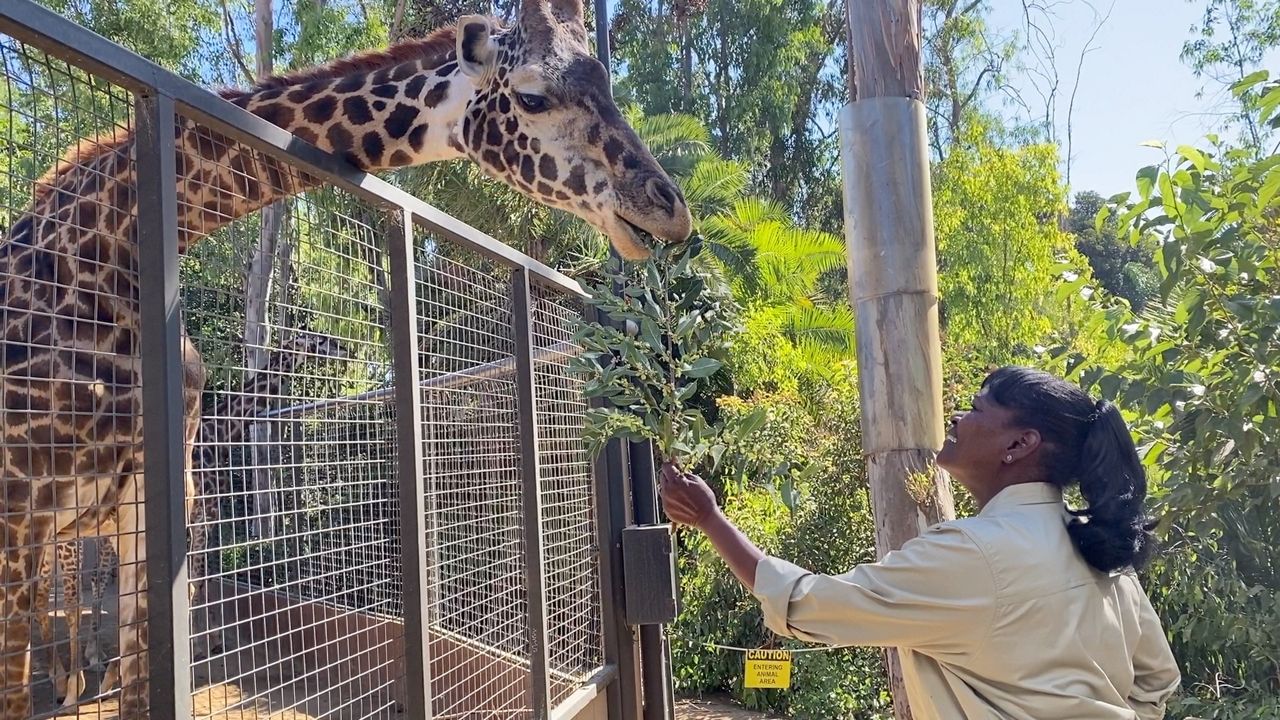SAN DIEGO — The San Diego Zoo is on a quest to grow its own food for animals. Lisa Martin, the wildlife care supervisor, says variety makes giraffes like Harriet much happier.
"The more that we can offer natural experiences for our wildlife, the better their welfare is going to be,” she said.
Feeding the wildlife in the zoo's care with a diverse choice of plants is made possible through the Browse Program. Browse is the name for plants grown specifically for food eaten by the animals. The San Diego Zoo and Safari Park is one of the few zoos in the United States well on its way to being self-sufficient when it comes to growing its own food for the animals. Martin says the eucalyptus they feed their koalas comes from the browse program.
“For koalas, eucalyptus is their only food component," she said. "So it’s particularly important for them to not just have eucalyptus but different varieties of eucalyptus.”
Kateri Wojcik is part of the horticulture team that grows dozens of acres of browse, everything from hibiscus branches and flowers to towering Ficus trees. The team estimates they harvest and deliver around 250 tons of browse by hand every year, feeding more than 300 animals at both the zoo and the safari park.
“We’re not buying it from a grocery store. We’re going it ourselves locally so that they can have something as fresh as possible,” Wojcik said.

Wojcik noted that they grow a variety of plants and trees, trim them and share them between the zoo and safari park to animals, such as elephants and gorillas.
“It’s a way to take care of plants and animals all in one," she said. "Animal welfare and plant husbandry.”
Martin loves having a more sustainable and more delicious way to take care of the animals she loves.
“What we’re feeding provides opportunities for wildlife to express their natural behaviors," she said. "That’s just as important to their health as what’s going in to their bodies.”
The horticulture team says San Diego’s climate allows them to grow different plants all year long. Wojcik says anything the animals don’t eat can be used in their enclosures for habitat enrichment.



